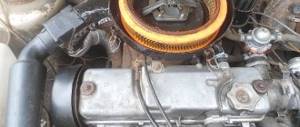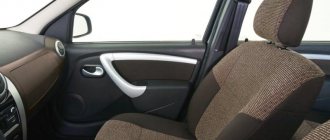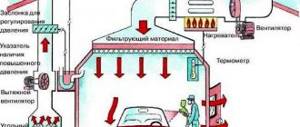The essence and purpose of the ERA GLONASS system
The state emergency response system “ERA GLONASS” was put into operation on the territory of the Russian Federation in January 2020 in order to preserve the life and health of citizens injured in emergencies and road accidents.
By order of the Ministry of Transport of the Russian Federation, from January 1, 2020, connection to the system became mandatory when organizing passenger transportation and transportation of dangerous goods. Connection to the system is also a prerequisite for the production of new cars and for the import of new cars from abroad.
The widespread introduction of the system in the Russian Federation has been postponed until 2020. Currently, mandatory and voluntary equipping of cars with a Glonass button are two different situations. Automakers who managed to register OTTS before the introduction of the GLONASS ERA are in no hurry to install the button on all models. The use of vehicles produced before the implementation of the system is still possible (with the exception of trucks for transporting dangerous goods and passenger buses).
What is the ERA-GLONASS system?
Most often, when we get into a serious accident, we need qualified help. But if the driver was seriously injured in an accident and cannot call for help on his own, then how to contact rescuers?
Starting from 2020, a decision was made on the territory of the Russian Federation on the mandatory installation of an emergency response system in case of accidents. To start working with this system, you need to press the “SOS” button on the dashboard and wait for the operator to respond. This button is located close to the driver so that he can easily reach it in an emergency.
It is very difficult to confuse the SOS button with any other button, since it most often has bright red colors, an image of a telephone handset and the characteristic “SOS” inscription.
Principle and features of operation of the ERA GLONASS system
ERA GLONASS is a simple and effective system that works free of charge. It does not break down and continues to work even in adverse conditions. Most drivers have heard about the system, but not everyone is aware of how ERA GLONASS works.
In essence, this is a reliable mobile phone equipped with a special button, supplemented with special sensors.
The success of the system is ensured by the following elements:
- SIM card connected to emergency services.
- A powerful antenna that provides reliable communications throughout the country.
- Modem for transmitting data to emergency services about the location of the damaged vehicle.
- Speaker and microphone for communication between the driver and passengers and the dispatcher.
- Navigation module for tracking the location of the injured vehicle.
Information about the car, when it gets into an accident, a distress signal automatically starts to sound. The system turns on when you press a button or from a strong blow. The location of the damaged vehicle is determined using the navigation module. The signal arrives via the cellular network directly to the control room.
The dispatcher makes attempts to contact the victims. The device installed in the car begins to work as a means of communication automatically. The dispatcher asks the victims what condition they are in and what kind of help they need.
If attempts to talk with the victims are unsuccessful, the dispatcher sends help to the scene of the incident.
If an unplanned activation of the button occurs, the driver or passengers can report this to the dispatcher, who will cancel the departure of emergency services.
The speed of arrival of a rescue team at the scene of an incident, due to the quick signal and the location of units throughout the country, is 20-30 minutes. If an accident occurs in the city, an ambulance gets to the scene earlier.
How does the GLONASS system for a car work?
GLONASS is a navigation system that helps motorists and entrepreneurs solve many problems. It was originally developed for military needs, but has recently begun to be used in the civilian sector. In this article we will talk about how the GLONASS system works, and also talk about tasks that can be solved with its help.
Operating principle
How does GLONASS work and what is it? It is a global system that allows you to determine the coordinate location of an object. High accuracy is achieved through the interaction of space satellites, special ground equipment, as well as a signal transmitting and receiving device installed on a car or any other vehicle. In addition, positioning accuracy can be improved by using information from GSM stations. This is especially true when driving around the city.
How GLONASS navigation works:
- Navigation equipment sends a request to connect to special satellites orbiting the Earth;
- The more satellites respond to the receiver, the higher the positioning accuracy (at least four are required for normal coordinate determination);
- After connecting, they begin to receive information about their own location, as well as the response time;
- The microprocessor built into the receiver analyzes the received information and makes comparisons;
- Based on the difference between the satellites' responses and their positions, the approximate coordinates of the receiver and therefore the vehicle are calculated;
- These actions are continuously repeated, which allows you to track the vehicle’s coordinates, its direction of movement, and speed in real time. However, it must be taken into account that as it increases, the accuracy of the receiver decreases somewhat.
Today there are 24 satellites in operation, which makes it possible to accurately determine coordinates throughout Russia and a good half of the entire globe.
Unlike the popular American GPS system, which, by the way, covers the entire planet, GLONASS is more reliable due to more successfully selected orbits. It is planned to launch several more spacecraft soon, which will greatly increase the stability of the system.
Important! In some cases, the accuracy of coordinate determination may vary greatly. This is due to the topography of the area (for example, if the driver is driving through a tunnel into which the signal cannot penetrate in principle), current weather conditions, as well as the specific satellites that responded to the receiver. For example, if four spacecraft responded to the device from the eastern side and none from the western side, this may distort the calculation algorithm.
What problems can the system solve?
Car location monitoring is a unique opportunity that helps both ordinary car enthusiasts and entrepreneurs. Here is just a small part of the possible applications:
- Navigation in unfamiliar terrain. Today, no one will be surprised by the presence of a navigator either in a car or in a smartphone. With its help, a car enthusiast can build the required route with step-by-step instructions. In addition, modern devices can download maps via the mobile network, as well as determine traffic congestion and offer optimal routes taking it into account. Manufacturers of such devices constantly update their navigation maps, keeping the information in the system up-to-date;
- Monitoring of vehicles by the enterprise. Previously, businessmen had to spend a lot of money on fuel losses due to drivers using company cars for personal purposes. The use of the GLONASS system eliminates this option, because the dispatcher will see the full route of the vehicle. Thus, it is possible to calculate the approximate fuel consumption, idle time (and, therefore, driver rest), as well as deviations from the route, proving the use of the car for one’s own purposes. If violations are confirmed, then such a driver can be issued a fine, because the evidence, as they say, is obvious;
- Application in car alarms and anti-theft systems. Using the GLONASS receiver installed in the tracker, the owner can receive information about the location of the stolen car, which will allow it to be quickly found. It is very difficult to deceive such a system, since it is located in a hard-to-reach place and operates on several frequencies at once;
- Use in self-driving cars. GLONASS, like any other navigation system, is an indispensable component of a drone. Such technologies are still being tested, but almost all experts predict the gradual displacement of conventional cars by unmanned ones.
The ERA GLONASS device is also used for emergency calls to rescuers. Let's talk about this in more detail.
What is ERA GLONASS?
The system is a mobile phone with a SIM card configured to work with any mobile operator and designed to call emergency services.
Its second component is a modem that transmits the necessary data to rescuers.
The third component is an amplified antenna that receives the signal even on difficult sections of the road. And finally, the fourth component is the GLONASS navigation receiver. In addition, modern system modules are also equipped with special sensors that are installed on the vehicle. They react to strong impacts or car overturns.
In the driver's compartment there is a microphone with a speaker for talking with the dispatcher, as well as an alarm button.
How the ERA GLONASS system works:
- When you press the panic button or after the sensors are triggered, the device sends a signal to the dispatcher;
- The operator calls the driver and tries to contact him (a microphone and speaker installed in the car are used for conversation);
- If it was not possible to get in touch, or if the fact of an accident is confirmed to the drivers themselves, the dispatcher transmits the information to the rescue service;
- Rescuers immediately respond to a call without confirmation, since they are given the exact coordinates of the accident site.
The advantages of such a system are obvious. It has long been known that most deaths do not occur during a traffic accident, but much later due to the untimely appearance of rescuers. The ERA GLONASS system solves this problem.
In addition, the device is fully compatible with similar European solutions, which allows you to get help not only in Russia, but also abroad.
What data does ERA GLONASS collect?
Many drivers are worried about the safety of their personal data, since an emergency call device must be installed on all new cars. You can often hear concerns expressed about the transfer of information about routes to third parties, as well as about listening to all conversations in the cabin through the installed microphone and speaker. However, device manufacturers deny all this data. According to them, the devices collect only such information as:
- Speed and impact sensor readings required for the device to operate;
- Information about activating the button located in the cabin;
- Data received from the driver at the time of the conversation with the dispatcher, if it took place;
- Number and make of the car;
- The speed at which the collision occurred;
- Type of engine and fuel used;
- Information on the number of passengers (calculated by the number of seat belts fastened);
- Vehicle location data received from the navigator.
How reliable is the device and does it need to be serviced?
All system components are made of durable materials so that they cannot be damaged in an accident. In addition, the system is equipped with an amplified antenna for better signal reception. The latter is especially important when traveling around the region, since cellular coverage in such areas leaves much to be desired.
Separately, it should be noted that ERA GLONASS has its own batteries on board, which are usually enough for several hours of operation of the device if, as a result of an accident, it is disconnected from the vehicle’s on-board network. The elements also turn on when the battery is discharged or the generator does not produce enough voltage to operate the device.
The system modules can operate in several frequencies at once, which eliminates the possibility of using jammers or other devices that reduce the efficiency of the mechanism.
All ERA GLONASS components are required to be sealed before installation. This is done in order to exclude the possibility of opening them and flashing the software.
The GLONASS navigation system allows motorists and entrepreneurs to solve many problems. Monitoring, navigation, calling emergency services, monitoring the driver’s time - this is not a complete list of the advantages of this technology. Manufacturers are constantly working both on the system itself and on developing solutions based on it to make using the car even more convenient and comfortable. Separately, it should be said about the accuracy of determining coordinates, which is constantly increasing when new satellites are launched into orbit.
From this material you learned how SN ERA GLONASS works, what it is and what its advantages are. In addition, work is constantly underway to improve it, although it can already be said that GLONASS as a navigation system fully justifies its use.
If you find an error, please select a piece of text and press Ctrl+Enter.
Article Rating
Tags: featured, Glonass, Glonass era
- Related Posts
- Features of operation, pros, cons and possible malfunctions of automobile air suspension
- What is a car turbocharger?
- Purpose, types, principle of operation and features of choosing a car tachometer
Subscribe
0 Comment
Inline Feedbacks
View all comments
What information does the ERA GLONASS system capture?
The negative attitude of some drivers is due to the belief that it can be used to track their movements. People perceive Glonass as a surveillance system. In fact, the developers of the system set themselves a different task, so tracking is not included in this primitive device.
ERA GLONASS gives one-time signals in case of an emergency.
Operational services receive only the information necessary to provide assistance:
- Coordinates of the car involved in the accident.
- The number of passengers is determined by the number of seat belts fastened.
- Information about the vehicle: number, model, color, fuel type.
The listed data is necessary for the rescue team to search for victims and make preliminary preparations for the operation, depending on their number.
Test of the ERA-Glonass system
| Step | Tested Component | Status/Error | LED indicator flashes |
| 0 | ERA-GLONASS system | No errors found. | green |
| 1 | Vehicle VIN | Vehicle VIN is empty/not configured. | x1 green, x1 red |
| 2 | Microphone | Microphone is not working. | x1 green, x2 red |
| 3 | Speaker | The speaker doesn't work. | x1 green, x3 red |
| 4 | Button in the ceiling | Button does not work. | x1 green, x4 red |
| 5 | Airbag/collision sensors | No signal. | x1 green, x5 red |
| 6 | Main GSM antenna | No signal. | x1 green, x6 red |
| 7 | Backup GSM antenna (if installed) | No signal. | x1 green, x7 red |
| 8 | GNSS (GPS) antenna | No signal. | x1 green, x8 red |
| 9 | Turning off the signal | Line break. | x1 green, x9 red |
| 10 | IVS internal error | Internal IVS/SIM/NAD is not working properly. | x1 green, x10 red |
| 11 | Emergency battery | The battery is low/defective. | x1 green, x11 red |
| 12 | Ignition | Ignition failure/interruption. | x1 green, x12 red |
Source
What is the GLONASS button and why install it in the car
The Glonass panic button is an integral part of the ERA-GLONASS terminal. It is mounted inside the car in such a way that access to it is ensured in any situation. The design of the button differs among different car manufacturers, but a prerequisite is to protect it with a special casing. The purpose of the plastic protection is to prevent accidental pressing of the button unless absolutely necessary. As a rule, the protective casing is a plastic cover that, in an emergency, can be easily folded back and provides access to the button.
If the button is pressed, a signal is automatically sent to the emergency control room. The advantage of the button compared to a call from a mobile phone is the strong and stable signal supplied thanks to a powerful antenna. The Glonass button operates even in areas where there is no mobile signal coverage.
A signal sent from a vehicle equipped with the Glonass system allows you to determine the location of an object with an accuracy of 10 meters.
Is installation required from 2020
In Russia, the system is being implemented gradually.
Since 2020, the following types of vehicles have been required to be equipped with a Glonass button:
- Commercial, used in organizing passenger transportation.
- Transporting dangerous goods.
- Transporting garbage and solid waste.
From January 2020, the requirement to connect to the system applies to all new vehicles driving on roads within the country. The requirement applies to all cars assembled in the Russian Federation since January 2020 and imported from abroad.
The relaxation applies to cars for which the importing company managed to obtain special certificates before January 1, 2020. Such cars can be sold in the country until January 1, 2020.
In connection with the introduction of the system, doubts arise as to whether the installation of the Glonass button is mandatory on all vehicles currently in use. There are no requirements for mandatory installation of Glonass on a car yet. The system is being introduced gradually, by equipping all new vehicles with it. With the complete implementation of the system, it will be impossible not only to buy a new car, but also to insure it under compulsory motor liability insurance.
Installing a button on used cars is currently voluntary. Used cars are being sold and will be sold for several more years without the Glonass button.
How to get and install a button in your car
Many drivers currently do not properly understand what the Glonass button is for. After all, there is a mobile phone on which you can call for help. But to call on their own, the victims must be conscious. And you don’t always have to rely on help from those passing by. The inability to call for help may also be due to a lack of cellular signal.
Moreover, half of the deaths in road accidents are associated with late provision of assistance. Therefore, installing a button is necessary for timely assistance in the event of an accident, because the signal is sent to the system automatically, without human intervention. The signal about an accident to the Glonass system and the response speed of services is 30% higher than when calling 112. Additionally, the 112 service dispatcher must explain where the injured vehicle is located. Whereas GLONASS determines the location automatically, and no time is wasted on explaining and searching for victims.
Therefore, many drivers install a panic button on their own car on a voluntary basis.
Installation is possible on any type of transport. Qualified installation can be carried out by contacting a certified center. In the Russian Federation there is only one operator of the Glonass system, with which specialized centers enter into contracts.
You can only get a certified set of equipment from them. The equipment is mounted discreetly and connected to the vehicle's on-board network or battery.
The wizard performs the following actions:
- Selects a place in the vehicle to mount the control unit: inside the cabin, under the hood, in the luggage compartment.
- Installs GPS and GSM antennas. The antenna is mounted with the active part parallel to the ground on any unshielded area of the car body. The GSM antenna is located at a distance of 1 meter from the GPS antenna.
- Connects power: black drive - to the negative of the car, red - to the positive (through a special fuse.
The connection process is simple and takes little time. If necessary, you can connect additional sensors that will monitor the ignition, fuel level, etc.
How the system works
When you press the button, an emergency message is sent to the operator of the ERA-GLONASS system. After this, he will try to contact the driver by calling back to the car's device to find out the details of the incident. If he fails, then the driver is probably in poor condition, and the operator sends a call to doctors and rescuers.
The system consists of a GLONASS navigation module (GPS), several antennas, a microphone, a speaker, a special SIM card, a control unit and a backup battery in case the car battery is disconnected. There is an emergency call button with the inscription SOS on the ceiling of the car.
— The ERA-GLONASS check applies to cars for Russia and Belarus. — You can check the functionality of individual components and communication of the ERA Glonass system using the vehicle diagnostic adapter or using the system self-test. — To run a functional test of components and communications, the ERA-GLONASS system must be activated. — The ERA-GLONASS system is activated for the first time after turning off the transport mode.
The self-test checks the following:
— OCU, software integrity and real-time system operation — GNSS (GPS) antenna — GSM antenna — Microphone — Loudspeaker — Connection of the device to other components (data bus, airbag) — Connection of HMI components — Button in the headliner — Emergency battery status
Button installation cost
The price of the Glonass system module itself may vary in different regions and among different selling companies. This is due to the fact that overhead costs are added to the basic price. The cost of the module also depends on the configuration and the availability of additional functions. On average, prices for a module start at 8,000 rubles. The simplest model with manual control can be purchased for a price of 4,000 rubles.
The installation price depends on the module configuration and car model, as well as on the prices of a specific service center. On average, prices vary from 1800 to 7 thousand rubles.
The ERA GLONASS monitoring system is a new word in ensuring traffic safety on the territory of the Russian Federation. This is an opportunity to quickly get help in the event of an accident on the highway, which means a chance to save the lives of drivers and passengers. Therefore, all drivers who care about safety should think about installing a Glonass button on their car.










